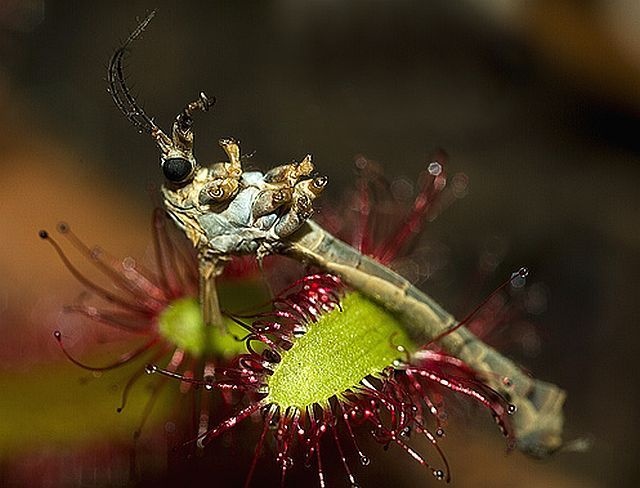|
|
Carnivorous Plant Consuming Insects
|
A carnivorous plant that catches no insects at all will rarely die, although its growth may be impaired. In general, these plants are best left to their own devices: after underwatering with tap-water, the most common cause of Venus flytrap death is prodding the traps to watch them close and feeding them cheese and other inappropriate items.
Most carnivorous plants require bright light, and most will look better under such conditions, as this encourages them to synthesise red and purple anthocyanin pigments. Nepenthes and Pinguicula will do better out of full sun, but most other species are happy in direct sunlight.
Carnivores mostly live in bogs, and those that do not are generally tropical. Hence, most require high humidity. On a small scale, this can be achieved by placing the plant in a wide saucer containing pebbles that are kept permanently wet. Small Nepenthes species grow well in large terraria.
Many carnivores are native to cold temperate regions and can be grown outside in a bog garden year-round. Most Sarracenia can tolerate temperatures well below freezing, despite most species being native to the southeastern United States. Species of Drosera and Pinguicula also tolerate subfreezing temperatures. Nepenthes species, which are tropical, require temperatures from 20 to 30 °C to thrive.
|
|









